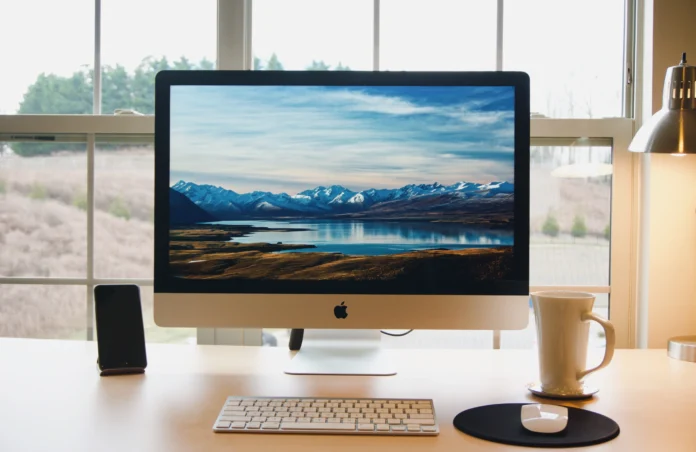A network printer is any printer connected to a network. More modern models can use Wi-Fi to connect. While a local printer connects directly to the device that needs it, a network printer can be accessed simultaneously by multiple devices on the same network.
This is useful if you’re working in an office, for example. It’s more advantageous to install one device for multiple office workers than to burden yourself with buying, installing, and setting up multiple printers for each employee separately.
How to add a network printer on a Mac manually
Although Apple products are known for their elegance both externally and in the app, not all features are obvious in execution. This also applies to exactly how to connect the Internet printer. In order to do this, you’ll need:
- First find out the name of the printer you want to connect. To do this, find the label on the printer. It should have the name you want on it. Quite often, when it comes to printers at work or in educational institutions, their names are based on where the printer is located. It could be, for example, the name of your department or the room number where the printer is located. The name might look like this: “labroom09-fl04”. If you cannot find the label on the printer, try asking a colleague or faculty member first.
- When you know the name of your printer, on your Mac, open the “Self-Service” app.
- While you’re in the Self-Service menu, select “Printers”. If the printer you’re installing is available, click “Install”. If not, or if you’re having problems, go to the next step to install manually.
- In case the printer wasn’t available to Sync through Self-Service, click on the Apple menu in the top left corner of the screen and select “System Preferences”.
- After going to the above item, locate and select the “Printers & Scanners” option.
- Next, click on the “+” sign. It’s located at the bottom left of the screen.
- Click on IP. In the Address field, enter the full name of your printer.
- After that, in the “Use” field, it should automatically select the drivers for your printer model. If “Generic Printer” is selected by default, try it:
- First, try to change the protocol settings and select “Auto Select” from the “Use” menu again. Repeat for each protocol setting.
- Next, make sure that you and your printer are turned on and connected to the network, naturally. If not, connect your devices or remove any obstacles that are preventing this.
- Make sure your printer’s name address is correct. Try adding “-lw” at the end. For example, if you have “ath-copy”, try using “ath-copy-lw”.
- Try selecting “Select Software…” and find the printer model in the list.
- It may happen that with more sophisticated copiers, you may need to download and install drivers from the printer manufacturer’s website.
- Click the “Add” button to continue.
- If an error such as “Cannot check printer on your network” occurs, click “Cancel” and return to the previous step.
- If the options window appears and the icon looks like your printer, this is a sure sign that you’re on the right track. In case your printer has any special additional features, such as a duplex unit or hole punch, this is the place to point. If you’re not sure if your printer has extra options, don’t worry about it. You can always add them later, if they exist, and you decide you need them. Once you have made all the necessary changes, click OK.
That’s it! If you have more printers to add, click the + button to continue adding printers.
How to explain why printer doesn’t work with your Mac
When you rely heavily on your Mac for day-to-day work, you know the frustration when your computer system doesn’t work as it should.
It can happen that a peripheral device, such as a printer, can suddenly malfunction after only a few hours of operation. If this happens, check the following:
- First check the cables and the Internet connection. This is especially important if you have many devices connected to your Mac. Try reconnecting to the access point and see if you can fix the problem this way. You can also try disconnecting unnecessary devices from your Mac, this can also help.
- Check if you need to update the drivers on your device. Use Software Update to find and install any updated software that might be affecting your printer. If a printer driver is missing, download a copy of the driver from the Mac OS X Downloads page or check the printer manufacturer’s Website.
If these two things aren’t the cause, you might want to contact the service center at the store where you bought your printer or notify your bosses at the place you work about your problem.




